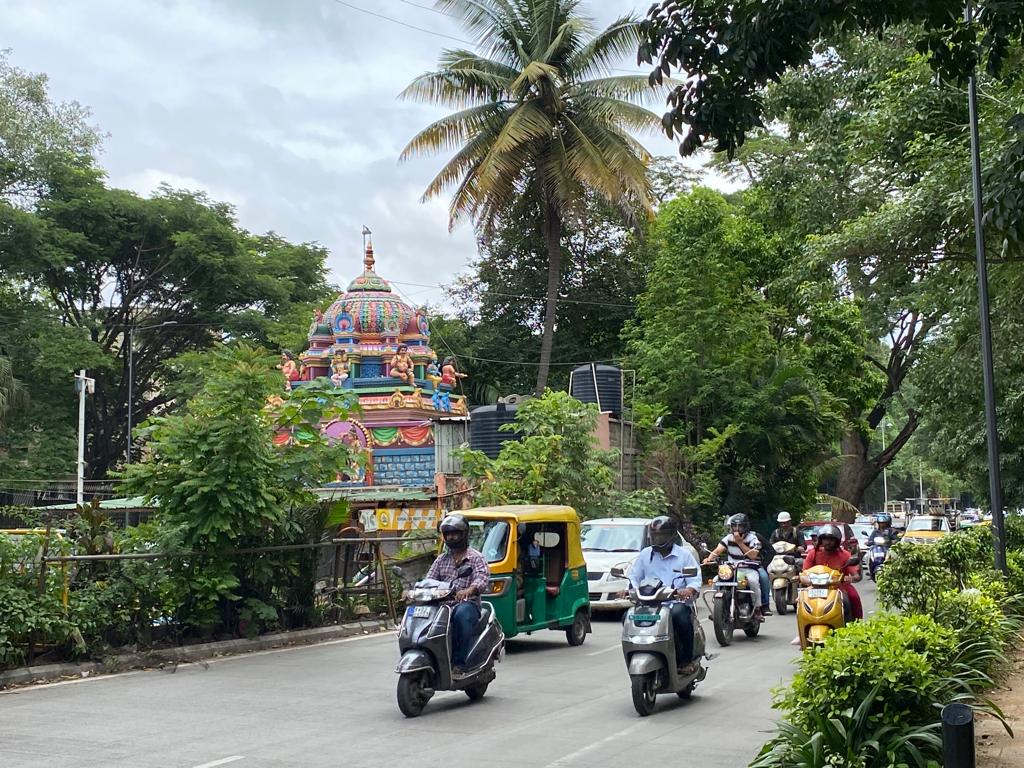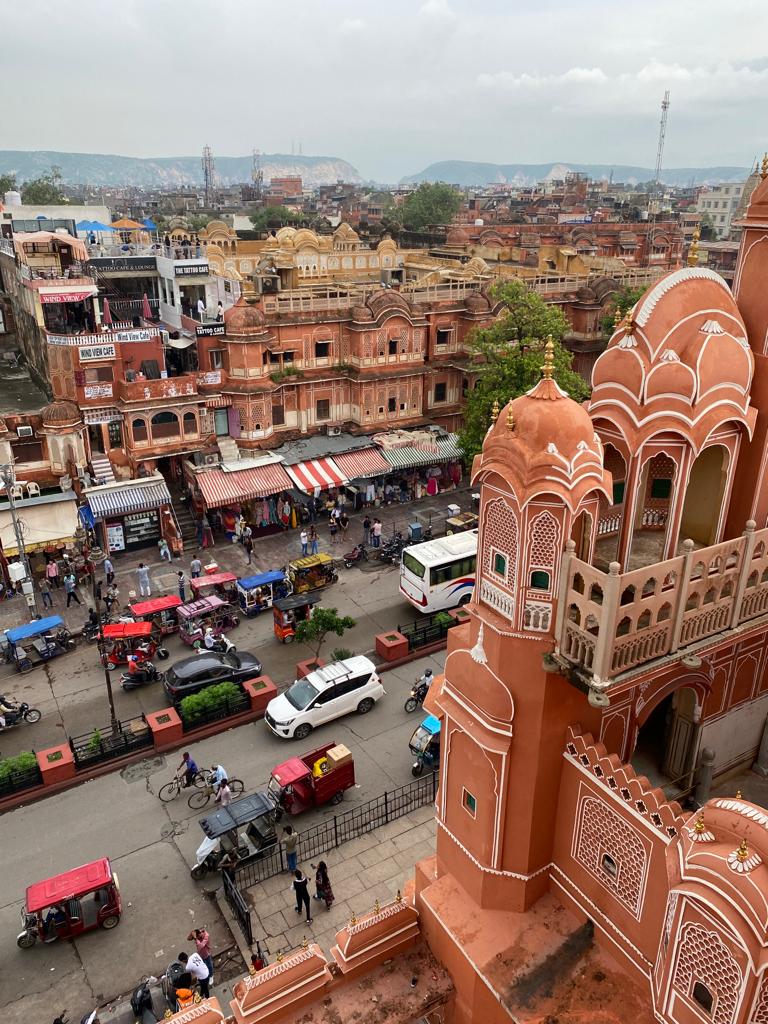By Belen Fodde, 28/8/2023.
My last post will move away from the academic/research realm and will focus on the experience of visiting India for the first time alone. My hope is to reflect on this for my own personal purposes, but also to contribute to future ICI fellows’ experiences.
The ICI fellowship gave me the incredible opportunity to travel to India (and to Asia!) for the first time. My curiosity and desire to visit, learn and reflect from India pushed me to apply to the fellowship and to prepare for the trip. And in all that process I think I wasn’t thinking for the most part in the fact that I was deciding to travel to India for the first time all alone, as a Western woman. By the time I realized that, I was already on board and even though it gave me some anxiety, it never occurred to me not to do so. And thankfully I didn’t back away! India can be visited alone perfectly and, if I think back on my experience, I can’t imagine a better way of doing so.
I was lucky enough to stay in India for over five weeks, visiting Bangalore, Kochi and Alleppey in Kerala, Mumbai, Jaipur, Agra, Delhi, and Rishikesh. I still can’t believe how much I’ve seen and learnt through it, beyond the research aspect that was also extremely helpful to reflect on my dissertation and research projects. That said, there were some challenges along the way, or situations that didn’t make me feel entirely comfortable or safe. So here are a few recommendations I would give to any person like me, visiting this unique country for the first time:
Start by taking it easy: the first hours and days in India can be a bit overwhelming. Indian cities go at a really fast pace, and you might feel you don’t fit, or you don’t understand how to navigate it, or even overwhelmed. My technique for this was to give myself some extra days in the first place I got to, to not feel pressured to have to go out and do more than I could do. I would just go out for the number of hours I felt I could manage, and then just went back to the place where I was staying. In this sense, starting off at Bangalore was for me really helpful, so by the time I got to Delhi I was more used to the dynamics.
Never be afraid to ask: ask anything you need to understand, even if people don’t speak your language and you don’t speak theirs, hand gestures can sometimes be enough. Otherwise, try to find someone that speaks English, or ask someone you know has visited India. In my opinion, during a large percent of my time in India I wasn’t entirely sure about what was going on and that uncertainty was nice too! But if you’re feeling anxious or need to solve a key question, never be afraid to ask!
Go with the flow: I visited India during the monsoon season, and I think that visiting during the months of July and August pushed me to move away from being able to control what was happening. To begin with, you know it will rain, but you don’t know when exactly. So just be ready for it. The monsoon may also change your travel plans, if there are floodings for example. Take it as it comes- just go with the flow and enjoy what you have and can do!
Identify your limits and boundaries: as I said, Indian pace can be a bit intimidating, without considering the number of people you will encounter everywhere you go. And when I say everywhere, is everywhere. So, my big learning was to not do anything that wasn’t making me feel comfortable or safe enough. And this is even more important if you’re a woman. If you think a place is too overwhelming for you, it’s okay if you leave. It’s better to leave and try coming back another day, than staying and not enjoying it. This applies to food as well – in my experience and because of my regular diet, I couldn’t have spicy food all the time. So I started alternating my food intakes to feel better.
Visit as much as you can: India is a varied as is big. Each place I visited was different from the previous one (and I can’t imagine how much I missed!). I have the feeling that if I would’ve only visited the main cities, or only the North of the country (or the South), my perception of India would be entirely different. That is why my itinerary was weird, but I think it gave me the opportunity to appreciate different sides of India. So, I would suggest that you move as much as you can, given your timeframe and your budget.
Identify research collaborations before traveling: my last point is more related to the academic aspect of the travel. Before going to India, try to establish contact with the researchers or professors you want to work with. This way you can share your research interests with them, and they can guide you or give you suggestions on what and how to do it. To me this was key, as when I got to India, I already had an idea of what I wanted to do, and they knew as well.
Finally, I would like to thank the India China Institute for this once in a lifetime chance, and for their support in every way. To the Indian Institute for Human Settlements (IIHS), whose researchers guided me through the entire process and were extremely generous with their knowledge and research; and to Maria Lobo and Vinodkumar Rao from SPARC for sharing their invaluable work with me. And my infinite gratitude to a former ICI fellow, Aditi Dey, for her constant encouragement to do this trip, her uncountable suggestions and recommendations, her help navigating Indian payment methods, and for making me feel welcome in her country.


